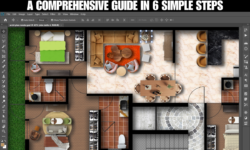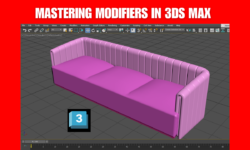Experience Interior Design with AI and AR/VR Integration



The integration of AI and AR/VR technology is changing the way we approach interior design. This combination is streamlining more immersive and interactive experiences for client, revolutionizing the design process , and streamlining the process of interiors. In this blog , we will try to experience Interior Design with AI and AR/VR integration and also find out its benefits.
Before moving onto the main topic, it is essential to know the basic terminology which is used in this blog . So let’s start with the definitions and its usability in interior design.
What is AI ?
AI stands for Artificial Intelligence , which is a type of technology that helps computers to act like humans. It means that computer can learn, understand , and make decisions on their own , just like people do.
For example , imagine you want to play a game on your phone . A normal computer program would follow a set of rules and perform the same way every time you play . However , with AI , the computer can learn from your moves and make its own decisions , making the game more challenging and interesting.
What is AR Technology ?
AR stands for Augmented Reality . It’s a technology that enhances the real world by adding digital information , images , or virtual objects to it .
Think of it like this : Imagine you’re looking at a room through your smartphone camera . With AR technology, you can add virtual furniture , like a couch or a table , to the room and see how it would look as if it were actually there . You can move around the room and see the virtual objects from different angles . This is an example of how AR can augment the real world with digital information and make it more interactive and engaging .
What is VR Technology ?
VR stands for Virtual Reality . It’s a technology that creates a completely artificial environment that you can interact with . With VR , you wear a headset that covers your eyes and replaces the real world with a virtual one.
For example , imagine you want to design a new room in your house . With VR , you can put on a headset and enter a virtual environment that simulates your new room . You can walk around the room , see how the furniture and decor look , and make changes in real-time , all from the comfort of your own home . This is an example of how VR can be used for interior design , allowing you to experience and explore virtual spaces before making any changes to your real world environment.
AR/VR Visualisation
With AR/VR technology, designer can create virtual 3D model of a room and allow the client to experience it as if they were standing in the actual space . This can help the client get a better feel for the design and make changes as needed.
AI-Assisted Design
AI can be used to generate multiple design options based on the client’s preferences and requirements. For example, if the client wants a minimilist living room , the AI can suggest furniture and color options that fit that aesthetic.
Automated Material Selection
AI can analyse a space and suggest the best materials for the floor , walls and ceiling based on factors such as cost , durability , and environmental impact.
Real-Time Design Changes
With AR/VR , a client can make changes to the virtual design in real-time and see the results instantly. This can help speed up the design process and ensure that everyone is on the same page.
Creating More Immersive Experience
The integration of AI and AR/VR technology with interior design is creating more realistic simulations of interiors . For example, RoomSketcher uses augmented reality to create three-dimensional simulations of interiors , while SketchUp uses virtual reality to allow clients to experience their designs before they are built . This not only enhances the clients experience, but it also eliminates the need for costly and time-consuming physical prototypes.
Revolutionising The Design Process
AI and AR/VR technology are also revolutionising the design process by analysing data for efficiency and sustainability. For example , DFMA software uses AI to analyse data and streamline the design process , making it more sustainable and cost-effective. Materiali also uses AI to analyse data on materials , manufacturing processes and customer preferences to create designs that are more eco-friendly and cost-effective. This supports the statement that the experience of interior design with AI and AR/VR integration is going to be next level .
AR/VR and AI Software and Apps For Interior Design
- RoomSketcher: A floor plan and interior design software that allows you to create 3D models and virtual tours.
- SketchUp: A 3D modelling software that can be used for interior design and has a number of plugins for AR/VR visualisation.
- Hololens: A mixed reality headset from Microsoft that allows you to view 3D models in the real world .
- Magic Leap: A mixed reality headset that enables you to see and interact with virtual objects in the real world.
- IKEA Place: An AR app that allows you to see how furniture and home decor products would look in your space before you buy them .
- Modsy: An AI-Powered interior design service that creates 3D models and design options based on your style and space.
- Hutch: An app that allows you to try different furniture and decor items in your space using AR.
- Resene Color Match: An AI-powered tool that helps you choose the right colours for your home based on your preferences and lighting in your space. These are just a few examples of the many software and apps available for AR/VR and AI in interior design.
Balancing Technology And Human Touch
It is important to note the limitations and potential consequences of AI and AR/VR technology in interior design . While technology can enhance the design process, it is important to preserve the human touch in the creative process. This can be achieved by balancing the use of technology with human intuition and creativity , ensuring that the end result is a unique and personalised design .
Conclusion
In conclusion , the integration of AI and AR/VR technology in interior design is changing the way we approach interior design. This combination is creating more immersive experiences, revolutionising the design process, and optimising designs for efficiency and sustainability. However , it is important to preserve the human touch in the creative process and ensure the technology is used in balance with human intuition and creativity. So if we keep this important point in mind we can say that the future of interior design with AI and AR/VR integration is going to be really great !
You May Also Like To Read : 8 groundbreaking Apps Powered by AI



Thanks for posting. I really enjoyed reading it, especially because it addressed my problem. It helped me a lot and I hope it will help others too.
Thank you for writing this post!
Outstanding quest there. What happened after? Take care!